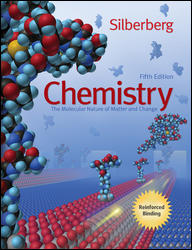Please note that this quiz uses special characters. Not all browsers display special characters properly. For best results please use Internet Explorer 5.5 or newer or Netscape 6.2 or newer.
1 2 is inA) a p orbital. B) an s orbital. C) an sp 2 hybrid orbital. D) an sp 3 hybrid orbital. E) none of the above orbital types. 2 sp 3 hybridization and a dipole moment?A) SiH4 B) BF3 C) NH3 D) BrF3 E) PCl5 3 A) sp 2 B) sp 3 C) sp 3 d 2 D) sp 3 d E) sp 4 2 CF2 ?A) sp 2 B) sp 3 d C) sp 3 D) sp E) sp 3 d 2 5 <a onClick="window.open('/olcweb/cgi/pluginpop.cgi?it=gif::::/sites/dl/free/0012041987/37547/pi.gif','popWin', 'width=NaN,height=NaN,resizable,scrollbars');" href="#"><img valign="absmiddle" height="16" width="16" border="0" src="/olcweb/styles/shared/linkicons/image.gif"> (0.0K)</a> 2 H2 ?A) 3 B) 2 C) 1 D) 0 E) none of the above 6 - ?A) sp 2 B) sp 3 d C) sp 3 D) sp E) sp 3 d 2 7 A) a <a onClick="window.open('/olcweb/cgi/pluginpop.cgi?it=gif::::/sites/dl/free/0012041987/37547/sigma.gif','popWin', 'width=NaN,height=NaN,resizable,scrollbars');" href="#"><img valign="absmiddle" height="16" width="16" border="0" src="/olcweb/styles/shared/linkicons/image.gif"> (0.0K)</a> <a onClick="window.open('/olcweb/cgi/pluginpop.cgi?it=gif::::/sites/dl/free/0012041987/37547/pi.gif','popWin', 'width=NaN,height=NaN,resizable,scrollbars');" href="#"><img valign="absmiddle" height="16" width="16" border="0" src="/olcweb/styles/shared/linkicons/image.gif"> (0.0K)</a> B) a <a onClick="window.open('/olcweb/cgi/pluginpop.cgi?it=gif::::/sites/dl/free/0012041987/37547/pi.gif','popWin', 'width=NaN,height=NaN,resizable,scrollbars');" href="#"><img valign="absmiddle" height="16" width="16" border="0" src="/olcweb/styles/shared/linkicons/image.gif"> (0.0K)</a> <a onClick="window.open('/olcweb/cgi/pluginpop.cgi?it=gif::::/sites/dl/free/0012041987/37547/sigma.gif','popWin', 'width=NaN,height=NaN,resizable,scrollbars');" href="#"><img valign="absmiddle" height="16" width="16" border="0" src="/olcweb/styles/shared/linkicons/image.gif"> (0.0K)</a> C) two <a onClick="window.open('/olcweb/cgi/pluginpop.cgi?it=gif::::/sites/dl/free/0012041987/37547/sigma.gif','popWin', 'width=NaN,height=NaN,resizable,scrollbars');" href="#"><img valign="absmiddle" height="16" width="16" border="0" src="/olcweb/styles/shared/linkicons/image.gif"> (0.0K)</a> D) two <a onClick="window.open('/olcweb/cgi/pluginpop.cgi?it=gif::::/sites/dl/free/0012041987/37547/pi.gif','popWin', 'width=NaN,height=NaN,resizable,scrollbars');" href="#"><img valign="absmiddle" height="16" width="16" border="0" src="/olcweb/styles/shared/linkicons/image.gif"> (0.0K)</a> E) a <a onClick="window.open('/olcweb/cgi/pluginpop.cgi?it=gif::::/sites/dl/free/0012041987/37547/sigma.gif','popWin', 'width=NaN,height=NaN,resizable,scrollbars');" href="#"><img valign="absmiddle" height="16" width="16" border="0" src="/olcweb/styles/shared/linkicons/image.gif"> (0.0K)</a> <a onClick="window.open('/olcweb/cgi/pluginpop.cgi?it=gif::::/sites/dl/free/0012041987/37547/pi.gif','popWin', 'width=NaN,height=NaN,resizable,scrollbars');" href="#"><img valign="absmiddle" height="16" width="16" border="0" src="/olcweb/styles/shared/linkicons/image.gif"> (0.0K)</a> 8 2 CNH?A) 2s B) 2p x C) sp D) sp 2 E) sp 3 9 A) two 2s orbitals overlapping B) two 2p orbitals overlapping C) two sp orbitals overlapping, two 2p y overlapping and two 2p z overlapping D) an sp and sp 2 overlapping and 2p orbitals overlapping E) an sp 2 and sp 2 overlapping and 2p orbitals overlapping 10 A) sp B) sp 2 C) sp 3 D) sp 3 d E) sp 3 d 2 11 2 , loses an electron,A) the ion formed will be less stable than N2 . B) the ion formed will be more stable than N2 . C) the stability of the ion formed will be the same as that of N2 . D) the bond length of ion will be shorter than the bond length of N2 . E) none of the above statements is correct. 12 A) He2 B) Li2 C) B2 D) C2 E) NO 13 2 + ?A) 1 B) 1.5 C) 2 D) 2.5 E) 3.0 14 2 isA) <a onClick="window.open('/olcweb/cgi/pluginpop.cgi?it=gif::::/sites/dl/free/0012041987/37547/sigma.gif','popWin', 'width=NaN,height=NaN,resizable,scrollbars');" href="#"><img valign="absmiddle" height="16" width="16" border="0" src="/olcweb/styles/shared/linkicons/image.gif"> (0.0K)</a> 2s B) <a onClick="window.open('/olcweb/cgi/pluginpop.cgi?it=gif::::/sites/dl/free/0012041987/37547/pi.gif','popWin', 'width=NaN,height=NaN,resizable,scrollbars');" href="#"><img valign="absmiddle" height="16" width="16" border="0" src="/olcweb/styles/shared/linkicons/image.gif"> (0.0K)</a> 2p C) <a onClick="window.open('/olcweb/cgi/pluginpop.cgi?it=gif::::/sites/dl/free/0012041987/37547/sigma.gif','popWin', 'width=NaN,height=NaN,resizable,scrollbars');" href="#"><img valign="absmiddle" height="16" width="16" border="0" src="/olcweb/styles/shared/linkicons/image.gif"> (0.0K)</a> 2s D) <a onClick="window.open('/olcweb/cgi/pluginpop.cgi?it=gif::::/sites/dl/free/0012041987/37547/pi.gif','popWin', 'width=NaN,height=NaN,resizable,scrollbars');" href="#"><img valign="absmiddle" height="16" width="16" border="0" src="/olcweb/styles/shared/linkicons/image.gif"> (0.0K)</a> 2p E) <a onClick="window.open('/olcweb/cgi/pluginpop.cgi?it=gif::::/sites/dl/free/0012041987/37547/sigma.gif','popWin', 'width=NaN,height=NaN,resizable,scrollbars');" href="#"><img valign="absmiddle" height="16" width="16" border="0" src="/olcweb/styles/shared/linkicons/image.gif"> (0.0K)</a> 2p 15 6 H6 ), carbonate ion (CO3 2- ) and water (H2 O). Of these three species, which one(s) has/have delocalized molecular orbitals?A) only benzene B) only carbonate C) only water D) benzene and water E) benzene and carbonate





